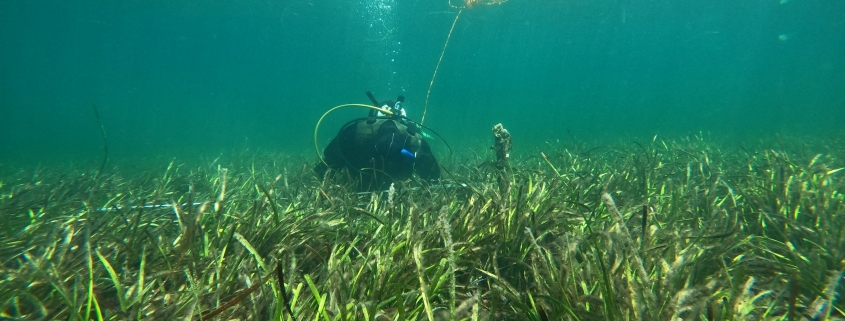How does the ocean’s only flowering plant cope with being buried?
In water tanks at Edith Cowan University, pots containing Posidonia sinuosa, the most widespread species of seagrass in Cockburn Sound, have been tested to see how much burial under sediment they can withstand. The research, part of the WAMSI Westport Marine Science Program, is looking at the resilience of the ocean’s only flowering plant, to dredging.
ECU researcher, Chanelle Webster, said seagrass was an important part of the ecosystem – providing not only food and habitat for marine animals but also stabilising the seabed and storing carbon which could help combat climate change.
Seagrasses tend to occur in the shallow waters along coastlines as they require a lot of sunlight, but they are easily affected by disturbances in the light reaching the plants.
“One of the main impacts of dredging is changing the amount of light plants receive when sediment is stirred up during operation,” Ms Webster said.
“Another effect of dredging on seagrass is when sediment gets moved and dumped in an area, the particles can settle on seagrass and bury it. This is where my experiment comes in.”
“There are about 10 different species of seagrass in the Sound but Posidonia sinuosa is the main species, you can find it in all areas of the Sound from Kwinana to Garden Island, and this is why we decided to do the experiment with this species.”
“We have been trying to understand how much burial Posidonia sinuosa can tolerate before you start seeing negative impacts to their growth or survival.”
Some of the potted seagrasses had no sediment added, others had up to 16 centimetres of sediment put on them in controlled conditions over four months.
The research team measured the amount the plants grew and noted cellular changes.
“From preliminary analysis, plants tolerate up to four centimetres of burial by sediment but with eight centimetres and more of burial they are impacted.
“When plants were buried by 8cm or more of sediment the growth was significantly less.”
The research indicated Posidonia sinuosa could tolerate burial of four centimetres of sediment for 16 weeks which was the duration of the experiment.
Ms Webster said while further analysis was still to be done, the preliminary results were promising in terms of being able to minimise impacts to seagrasses in the Sound.

